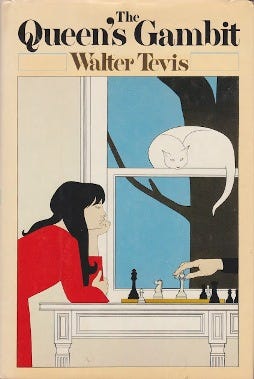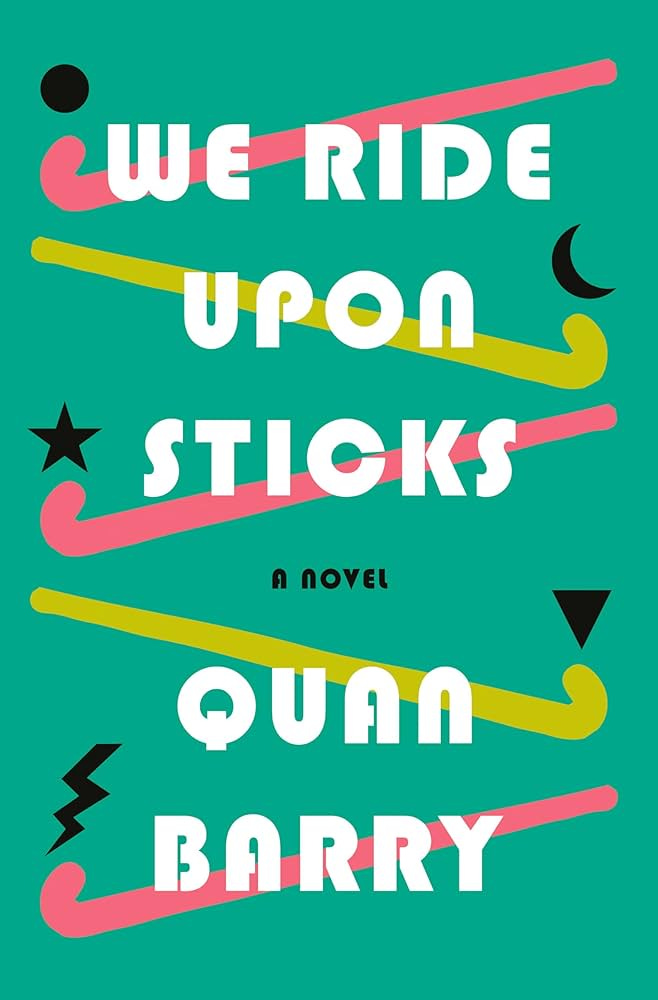The Ninth Inning is a Good Plot Device
“Biggest News” in Books: Blurbs
The discussion on blurbs (the little endorsement quotes you may or may not have noticed on your book jackets) broke into the mainstream this past week, after Simon & Schuster’s publisher wrote an essay about why the 100-year-old imprint won’t be requiring these endorsements any longer. This sparked headlines from dozens of papers, and then Rebecca Makkai’s newsletter on why she doesn’t blurb any longer was re-tooled and published by The New York Times. Lincoln Michel, an author I work with, weighed in with a funny, insightful, and even-keeled take. Or you can read Christopher Buckley’s opinion piece, which is filled with so much old-school, insider baseball knowledge that even I had a hard time following it.
A year ago, when we last did this blurb-questioning circuit, I wrote about blurbs with the consumer in mind (the subtitle — “The Necessary Pain in the A** of Publishing” — captures my general feelings). My one-sentence solution for a better blurb process would be something like this: editors/agents/authors send their little emails/notes with a drop-dead quote date and authors agree to receive copies of the books, if they sound interesting, with zero strings attached, then authors show support however they feel like (quote, social media post, etc.) and we agree to never bug them after sending them a book.
Now, let’s get to the real newsletter. Happy hangover from Super Bowl hangover day. Go birds. In honor of the Eagles’ amazing and crushing victory, which has none of the hallmarks of a great fictional sports story, we’ll be talking about the sports novel and what makes them work.
In a Sports Novel Rules Are Good
Sports are a perfect and timeless vehicle for a dramatic story. Fiction is about a writer deciding on an arbitrary set of rules — a place (i.e. no rainstorms can happen if the book is set in Death Valley); an event (i.e. a murder to solve); basic mechanics (i.e. realism, fantastical, etc.) — and sticking to them. And while rules are often annoying when watching sports (damn referees!), they are good for a sports novelist, giving the writer a nice set of established rules that they don’t have to create from scratch or pull from thin air. A sport already has a time keeping system, a score keeping system, roles for the characters, etc.
A story also needs tension and stakes, and what is more natural in producing this feeling than a competitive game in which someone must win and someone must lose? This isn’t a particularly groundbreaking observation, but sports stories, like love stories, don’t have to reinvent the wheel to be effective. Readers will always want to know if two people can overcome obstacles to fall in love just like they’ll want to know if the team they’re rooting for wins the big game in the end. The bottom of the ninth inning will always be a riveting plot device.
Another nice part about sports fiction is that the form gives the writer a convenient unit of time to plot around — just like a single game or a round of golf has an obvious rise and fall, so does a sport season. And unlike other seasons or chunks of time — one summer, sixteen years, twenty-four hours, etc.— a sport’s season already has a grand finale pre-programed.
But perhaps the best thing sports fiction offers writers as a template is that, with all of the rigidity provided by the rules, the stakes, and the season, it offers extraordinary freedom between the lines of the games. With such clarity of structure writers can do anything around the games themselves. Backstory, personal drama, conflict with the opposing side, conflict with your own team, conflict within the protagonist’s self. There’s so much room to develop characters and explore whatever they want, punctuated by the competitions. A writer can take the story as far away from the field as possible with the confidence that they can always rein it back in by bringing the characters back for a game.
The games themselves really are the punctuation in sports novels. Need to humble the protagonist? Humiliating loss. Need to create the illusion that the protagonist is gaining in confidence, power? Have them start racking up wins. Want the protagonist to realize there’s something more important than sports? Bittersweet victory. Sports create anticipation and expectation that a writer can always use to their advantage.
The Classic Sports Plot
I haven’t read a better sports novel than The Queen’s Gambit by Walter Tevis. His other most famous novel The Hustler isn’t far behind. In both novels, Tevis shows mastery of the rise and fall and rise form of a classic sports story. It’s the formula you’ll most often find in boxing movies—natural talent, protagonist humbled, training montage, big redemption fight.
The Queen’s Gambit, is so utterly readable because Tevis taps into the intoxicating pull of letting us feel the first part of the story so closely. At the start of the novel Beth Harmon knows nothing: not how the pieces work, how to set them up, or what the different colors mean. But she is transfixed and she is preternaturally talented, and the joy of the novel is that the reader gets to be right beside Beth as she grows in power. The pages twitch and jump with this energy:
Her mind was luminous, and her soul sang to her in the sweet moves of chess. The classroom smelled of chalk dust and her shoes squeaked as she moved down the rows of players. The room was silent; she felt her own presence centered in it, small and solid and in command. Outside, birds sang, but she did not hear them. Inside, some of the students stared at her. Boys came in from the hallway and lined up along the back wall to watch the homely girl from the orphanage at the edge of town who moved from player to player with the determined energy of a Caesar in the field, a Pavlova under the lights. There were about a dozen people watching. Some smirked and yawned, but others could feel the energy in the room, the presence of something that had never, in the long history of this tired old schoolroom, been felt there before.
Best of all is that Tevis gets that a sports novel, at its best, is not about the particular moves that are played. Why The Queen’s Gambit is transcendent (and even better than The Hustler) is that Tevis is exploring much more than the cliched desire to be a great competitor. He not only gets to the heart of what chess says about the people who obsess over it, but also the many layers of Beth as a character—The Queen’s Gambit is about maturing, isolation, friendship, family, and addiction (unlike in the TV show the drugs make Beth worse at chess, not better) as much as it is about winning and losing a game
Classic Sports Plot in the 21st Century
A sneaky good 21st century sports novel is Ernest Cline’s Ready Player One. Nowhere near as weighty as something like The Queen’s Gambit, Ready Player One is nonetheless at the pinnacle of using sports, or really, we should use the euphemism games here, as plot. Like Tevis in The Queen’s Gambit, Cline uses the same technique of letting the reader increase their knowledge with every challenge the protagonist faces. Cline figured out how to take a satisfying part of playing video games and novelize it— the reader is metaphorically “leveling up” with each task that the eighteen-year-old Wade Watts completes. Smartly, Cline didn’t invent a lot of his own games but used popular games and culture from the 80s— simple, nostalgic games that don’t require too much reader hand-holding (e.g. Pac-Man). In the are-video-games-sports conversation, Ready Player One surely makes a good argument that they are hard to tell apart.
Is it About the Sports?
In the canon of the-sports-aren’t-really-the-point sports fiction, We Ride Upon Sticks is a belter of a novel. Instead of focusing on an individual like The Queen’s Gambit, The Hustler, or Ready Player One, Quan Barry’s We Ride Upon Sticks is about the team more than individual greatness. The sport is field hockey, but the games are the rhythm section in this novel (each chapter is titled by the team’s weekly matchup) which centers around a group of once-losing field hockey girls who perform a satanic ritual involving Emilio Estevez in order to gain the dark power they need to win. This novel is so damn enjoyable from page to page that you’ll completely forget why the sports part even matters. What you’ll be left with is the hilarious moments of bonding in ways that don’t exist outside of growing up or the context of being on a team together. Here’s a taste:
“I’ll have what she’s having,” joked Sue Yoon, quoting everyone’s favorite new movie line of the summer from When Harry Met Sally, which they weren't carding for at the mall, although it was rated R.
Mel shot us a sly wink from the stage, which was surprising because the Mel Boucher we knew was more likely to accidentally wink with both eyes. In the low wattage of the auditorium, her all-American Québécois complexion looked radiant as any seraphim come to deliver the good news. And it was good news. For a team that most recently had posted a 2-8 record, it was wicked good news. Who knew? You scrawled your name in a book and tied yourself up like a pot roast with a piece of smelly blue tube sock and voilà! The world was your oyster. Mel was our very own archangel of darkness. In time, we were all having what she was having. Even Abby Putnam signed on after some initial sputtering. And what Mel Boucher was having was nothing the Judeo-Christian world we inhabited would have smiled on approvingly.
See, it turns out all those long dark hopeless seasons, we'd been putting our chips on the wrong god. Honestly, of all places on earth, the Town of Danvers should have seen us coming.
Sports Descriptions are Difficult
It’s not a sports novel, but I love the way that Kevin Wilson describes basketball in his novel Nothing to See Here about children who spontaneously burst into flames (yes, that’s the real premise, ignore your skepticism). Basketball is really hard to write about, and describing action of any sport can be difficult and often dull. But Wilson has a wizardry all his own and describes the pleasure of the game even without any of the stakes that a sports novel typically has (forgive any mistakes, I left my copy of the book somewhere and transcribed this from the audio):
She looked up at the hoop like it was a mountain, like the air was thinner up there. She weighed the ball, shifting it between her hands and then threw up a pretty ugly shot. It took part in three distinct movements, but I was amazed that she got it up to the hoop, just over the front of it. It bounced up in the air and then it bounced, and bounced, and bounced. And I was just praying please, please, please, please, please, and then the ball fell through the hoop. The luckiest shot I’d seen in a long time. It was true happiness I felt for Bessie because I knew what it felt like to make that shot. To get what you asked for and how rare that was in life.



